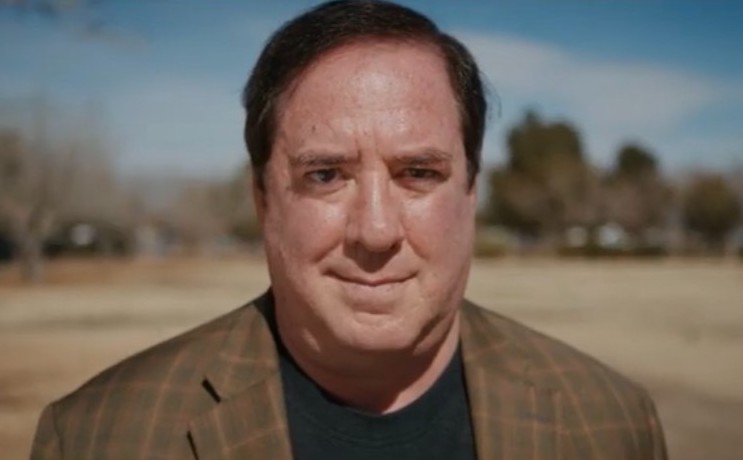Next Wave of Microschool Founders are More Diverse, Less Likely to be Educators
An analysis of the burgeoning sector shows greater numbers of Black and Hispanic founders, fewer teachers at the helm and less reliance on tuition

Get stories like these delivered straight to your inbox. Sign up for The 74 Newsletter
The face of microschooling is changing — from the racial diversity and professional background of its founders to how these small, nontraditional learning centers finance their operations.
Those are among the top findings of an analysis across 34 states of 100 current microschools and 100 more that were largely aiming to open this school year.
“Microschools can be organized as learning centers supporting homeschoolers, private schools (accredited and unaccredited) and other ways,” the National Microschooling Center states in its report. “What many people feel offers microschooling its transformative potential is that these can be created around the needs of the particular learners they serve.”
Families’ ongoing, pandemic-driven movement away from district public schools has been well-documented and in 2022, the number of children attending a microschool full time was estimated between 1.1 and 2.2 million by EdChoice.
Here are six key findings from the Microschooling Center’s analysis of where the sector is now and where it’s headed:
1. Prospective microschool leaders are more racially diverse than current founders — and many are not teachers
Of the 100 current microschool leaders surveyed, 64% are white, 13% are Black and 5% are Latino/Hispanic. The group of prospective founders included were 55% white, 27% Black and 5% Latino/Hispanic. The remaining percentages of leaders surveyed didn’t disclose their ethnicity.
Don Soifer, chief executive officer of the National Microschooling Center, said it’s a positive shift for microschools to be led by more people of color who more accurately reflect student diversity. A study from AASA, The School Superintendents Association, found that 89% of nearly 2,500 U.S. public school district chiefs surveyed identified as white while only 45% of U.S. students do.
Prospective leaders also have more varied professional backgrounds than current microschool leaders. About 70% of present founders are either current or former licensed educators while only 52% of prospective founders have a licensed education background.
Soifer said many people who are launching microschools aren’t going to be the ones teaching children on a normal basis, so they don’t necessarily need a license in education. The increase of leaders with fewer education degrees also tracks with the trend of parents creating their own microschools following COVID-19.
“There was sort of an all-hands-on-deck mentality that came out of the pandemic. We don’t talk about the pandemic that much because I think we’ve moved past that, but it opened up a lot of people’s eyes to what was going on,” Soifer told The 74. “So the professional background of the non-educators that we see leading microschools really does vary, and it really does tend to be people with some sort of entrepreneurial streak in them, who aren’t afraid of taking on something new.”
2. Prospective microshool leaders are relying less on tuition and more on institutional sources and fundraising
Charging tuition is still the main way microschools fund their operations, but those dollars are becoming less dominant.
About 88% of the current founders surveyed said their schools were primarily tuition-based while only 62% of prospective schools said they will derive most of their revenue from tuition. Many microschools draw from multiple funding sources.
While state-funded school choice options have expanded in the last few years, the use of that funding source for microschools has increased only slightly — from 17.8% to 19.8% — between current and prospective leaders.
Instead, nearly a quarter of prospective microschool leaders expect to access their funding from institutional sources, such as an employer or house of worship, or ongoing fundraising. That’s a steep hike from the 12% of microschools currently receiving money from that revenue stream.
3. The biggest motivator for creating a microschool is to help increase success for underserved students
When asked why they want to create a microschool, 53% of prospective leaders said it’s to provide opportunities to marginalized students and communities.
The second most common answer was to help struggling children thrive in a different learning environment. Microschools, which generally educate 15 students or fewer, offer a lot of flexibility for families because they can be housed anywhere while creating their own schedule and offering their own curriculum.
“We talk about them as entrepreneurs, and that’s fine, because in some ways they are entrepreneurs,” Soifer said. “But those motivations really tell a story about a sector that’s just not like any other sector that I know. We like to talk about them as entrepreneurs, but it’s really not a profit motive that drives them.”
4. Microschools use different learning styles than traditional public schools
About half of current microschool leaders are using “specialized learning philosophies” as their curriculum framework. This means they use various teaching methods like Montessori, Waldorf or child-centered learning.
Montessori learning is based on student-led and -paced work, while Waldorf learning is a holistic approach to education that focuses more on students’ intellectual and artistic skills.
Nearly 47% of current microschool leaders administer standardized norm-referenced assessments, which are tests that are used to compare students’ progress to other students in a predetermined peer group.
Soifer said some microschools, including the national franchise Acton Academy, make these assessments optional.
“It’s interesting. I would say generally speaking, about half the families like it and use it as a metric for their own understanding and about half of them don’t,” Soifer said. “We have microschools that simply don’t believe in norm-referenced (assessments). We have others that simply reject state academic content standards and prefer things like social and emotional growth metrics or academic writing metrics.”
5. A common challenge for current and prospective microschool founders are state regulations
The regulation framework of the education system can get complicated. It’s something microschool leaders are having a hard time with, according to the survey.
About a third of current microschool leaders expressed that they still need help with understanding statutory and regulatory requirements. This is also a problem for 88% of the people were hoping to start their own microschool this school year.

Soifer, whose Las Vegas-based organization was started in 2022 to help microschool founders navigate these challenges, said guidelines can vary widely among states that support school choice and those that don’t. Each state has its own requirements for school regulation — a microschool might have to become licensed, which might require teachers to have a specific level of education in order to teach. Microschools in other states might be required to register as a child care facility, which comes with its own regulations.
“I think it’s going to be sort of an increasing priority for policy decision makers to understand microschooling, whether it be a home-based microschool or microschool that is located in a commercial space or in a space that’s not zoned for a school,” Soifer said. “This can be allowed without putting good pupils and people in harm’s way while they’re trying to serve needs that families want.”
6. The most important student outcomes for future leaders are academic growth, proficiency and happiness
More than two-thirds of prospective microschool owners said in the survey that the most important outcome for students is academic growth.
About 61% said they also consider academic proficiency as an essential outcome of a child attending a microschool. That a child is happy and thriving in a new microschool setting is crucial, nearly 48% said.
“(Microschooling) is becoming more normal and more accepted by mainstream families,” Soifer said. “Charter schools never really got to a point where they could truly be ‘outside of the box’ because they were always measured by the state test and only the state tests. So the ways that microschools are measuring their impact — in different ways that are relevant to their mission — is a fascinating trendline. And I think that is one that’s really starting to take off.”
Disclosure: Stand Together Trust and the Walton Family Foundation provide financial support to the National Microschooling Center and to The 74.
Get stories like these delivered straight to your inbox. Sign up for The 74 Newsletter

